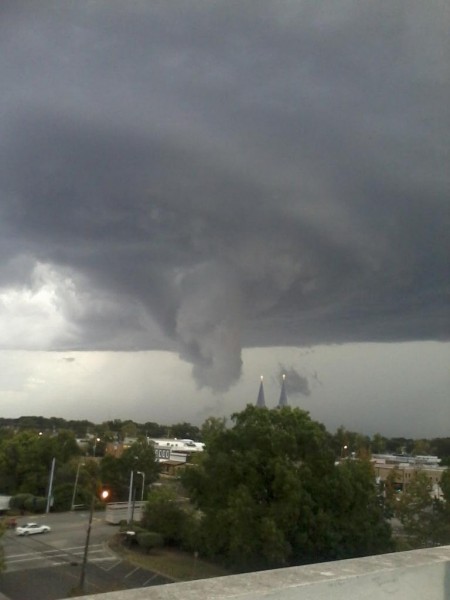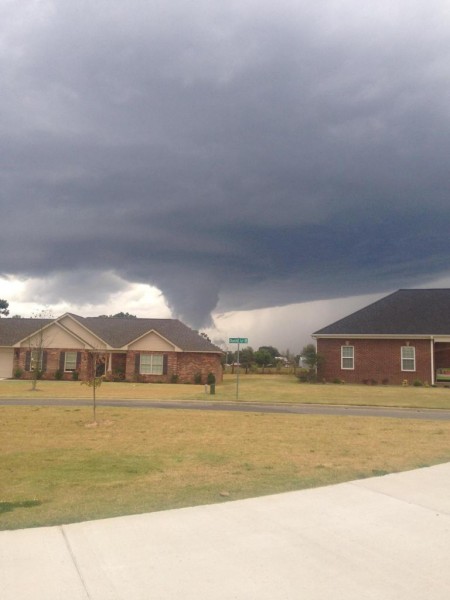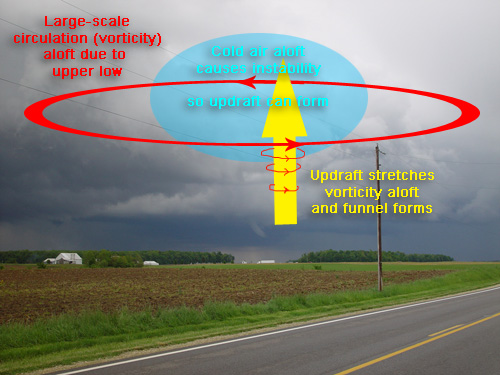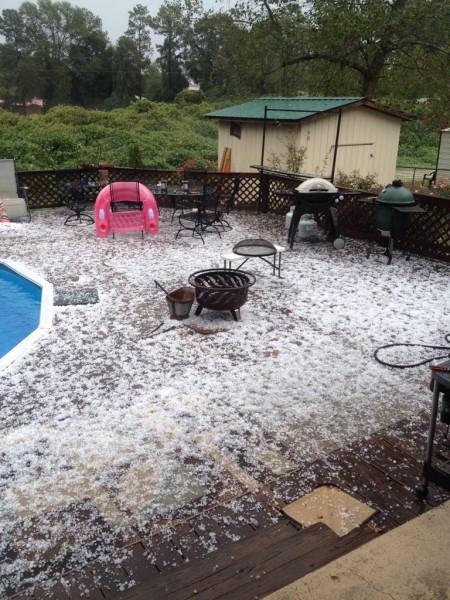Scud or Cold Air Funnel?
I received literally hundreds of images of this creepy cloud over Cullman late yesterday afternoon…
No doubt this was not a tornado, but is it a scud cloud? Or, a cold air funnel?
Scud clouds can look like a tornado or funnel cloud, but they are harmless. Scud clouds are not attached to large-scale storm rotation. They are caused by cold air outflow interacting with warmth ahead of the storm. This causes air to rise and condense. While these clouds often hang low under the base, they don’t indicate anything other than wind blowing out of the storm.
Cold air funnels are most commonly observed in the vicinity of a closed off, cold-core mid level low, or upper trough (there was a large scale upper trough over the eastern U.S. yesterday with very cold air aloft over Alabama). The cold air aloft associated with these features is how cold air funnels get their name. However the cold air aloft only provides instability for convection, it does not govern how the funnel clouds form. The upper rotation associated with the upper low provides an environment rich with vorticity, or “spin”. It is believed that within this spinning environment, localized areas of higher vorticity exist. Thanks to the cold air aloft, updrafts are able to develop and stretch the vorticity in the environment. Stretching of vorticity creates a column of rapidly-spinning air, and it is believed that this may lead to the development of a funnel cloud. Cold air funnels come from high based storms, and rarely touch the ground.
The NWS does not issue tornado warnings for cold air funnels.
From all of the reports received, many said there was no rotation. Some did report slow, erratic rotation. Sure seems like this was scud to me. But, we will keep looking at data and reports.
Bottom line is that this was not a tornado, and there was never danger of a tornado from the storm due to the high based nature of the thunderstorm (LCL heights over 1,000 meters). Hail was the big issue, and there was plenty of that…
Category: Alabama's Weather






















